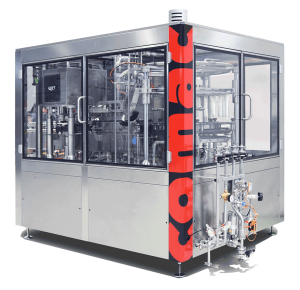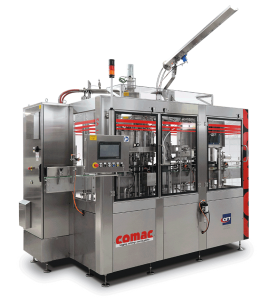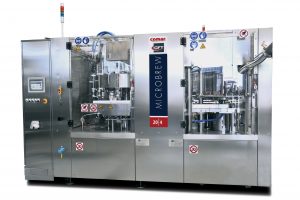Canned wines: advantages and packing solutions
Why is canned wine a growing trend? What advantages does this mode of packing bring, and what are the best solutions? Find it out with Comac!
Consumption of canned wines is proving to be a growing trend. What does this success depend on?
In this article:
- The origins of canned wine packing
- Why choosing canned wine
- Comac best solutions for packaging wine in cans
The origins of canned wine
Although initially the can was not considered suitable for the conservation of quality wine, today this kind of packaging is experiencing an increasing success.
How did the idea of canned wine come about, though?
Originally consumed by soldiers during World War I, canned wine began to spread onto the US market around the 30s. Early attempts with this mode of packing, however, highlighted some problems: in particular, contact with metal made the drink easily perishable.
Today, things have definitely improved: over the years – In fact, techniques for packaging wine in cans have been constantly refined through the study and development of new technologies, allowing the quality of the beverage to remain intact while lengthening considerably the shelf life.
In Italy, on the other hand, the introduction of canned wine dates back to 40 years approximately, and at first it was not very successful. Today, however, the situation is definitely changing, following a worldwide trend.
Why choosing canned wine
The over-increasingly popularity of canned wine depends on a number of important advantages.
Choosing cans for wine packaging, in fact:
- Makes it possible to process wines of the highest quality. Due to the great work of innovation and refinement over the years, now the can is able to fully maintain all the qualities of wine and bring out its flavor, even for longer periods. Keeping a low level of sulphites is also an important key aspect – Sulphites, in excessive quantities, can be harmful;
- Is logistically advantageous – Cans not only take up less space than bottles and weigh less, but they are also more durable, with a lower risk of breakage;
- Is an environmentally winning solution: aluminum is 100% recyclable and implies less CO2 production.
Canned wine, therefore, is not only a breakthrough from a quality point of view but also, and especially, from a logistics and environmental one. These aspects are particularly relevant within the business policies of most companies today.
Of course, a quality result depends on the use of advanced, reliable, and high-performing equipment, such as the can filling machines manufactured by Comac.
Comac best solutions for packaging canned wine
Let’s now look at some of the best Comac can lines solutions for wine packaging:
- Smartcan 8-1: This machine is perfect for filling canned wine, both still and sparkling. It is an automatic monoblock capable of packaging up to 3,000 cans/hour, setting all filling parameters directly from an operator panel. The compact size of this filling machine, which features an electronic seamer, makes it perfect even in small spaces.

- Pegasus 8-1 V2: This filling machine is based on back pressure filling technology and is suitable for the can filling of still and carbonated beverages. It is, therefore, an excellent solution for packing both still and sparklingwines. With an output capacity of 4,000 cans/hour, this monoblock is capable of a very high-quality performance and is particularly suitable for small and medium-sized businesses.

- Microbrew 20-4: This model offers an output capacity of 12,000 cans/hour, the highest offered by Comac. In addition to being particularly suitable for processing craft beers, this filler is capable of packaging still and sparkling canned wines due to the electro pneumatic filling valves with back-pressure filling technology.

Rely on our experts to pack your canned wines, choose Comac!